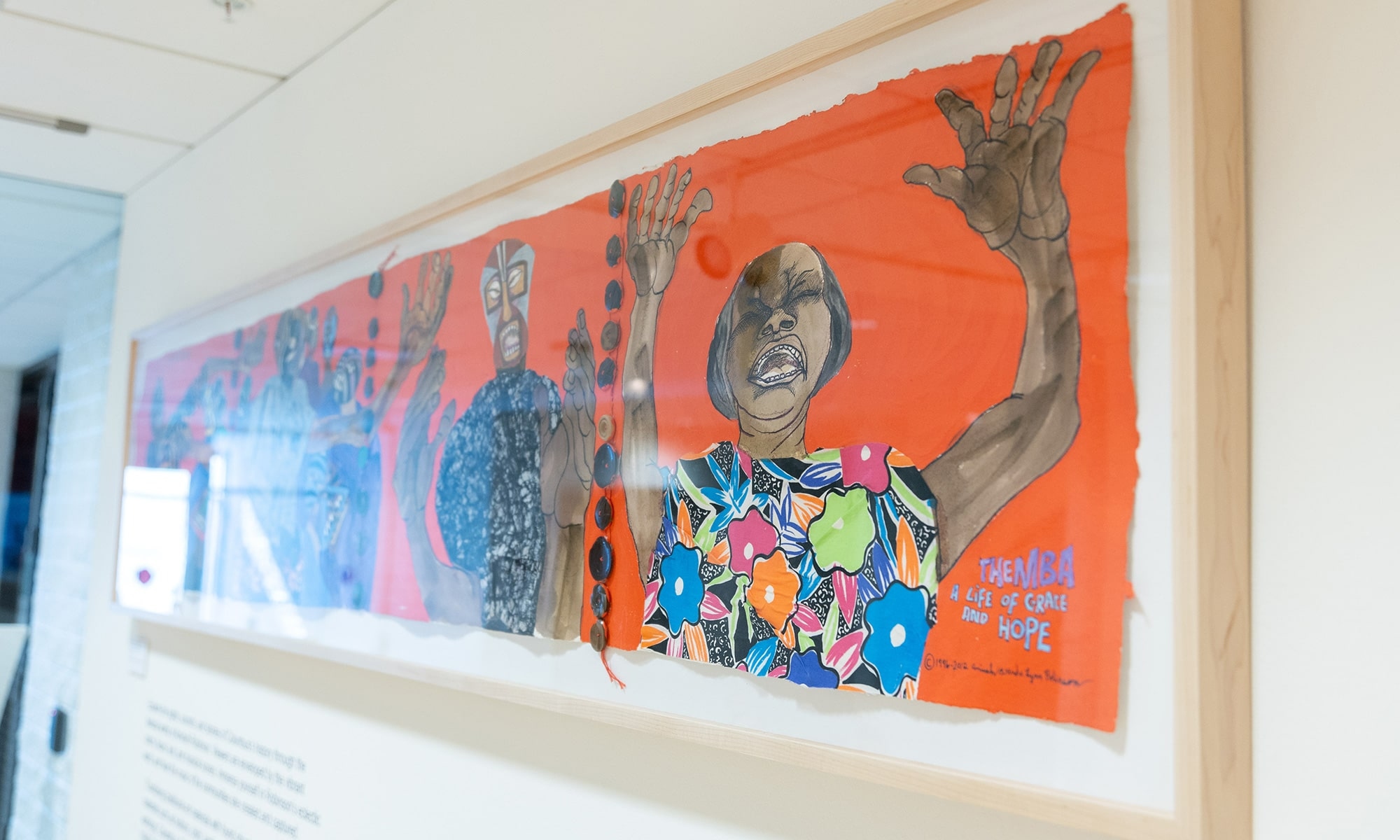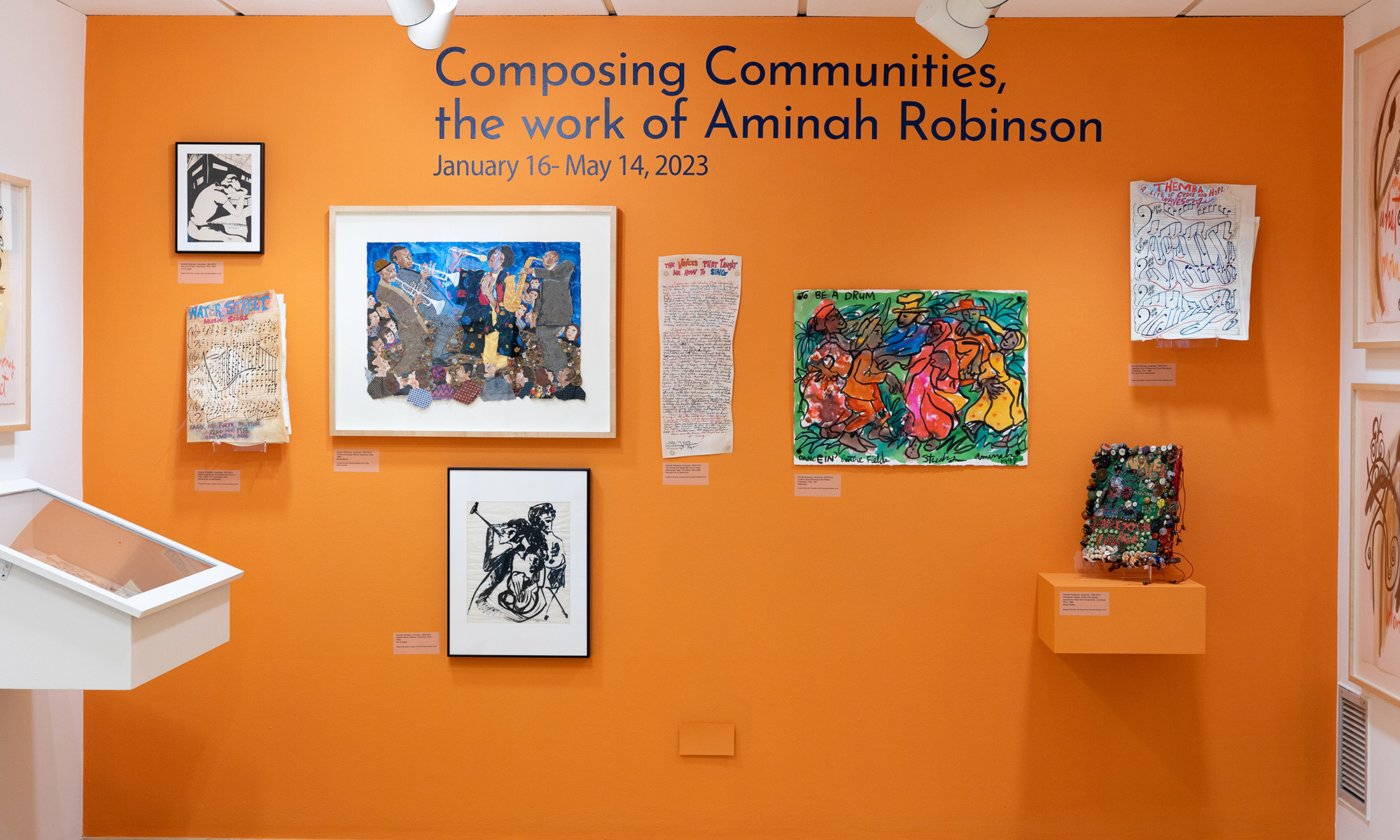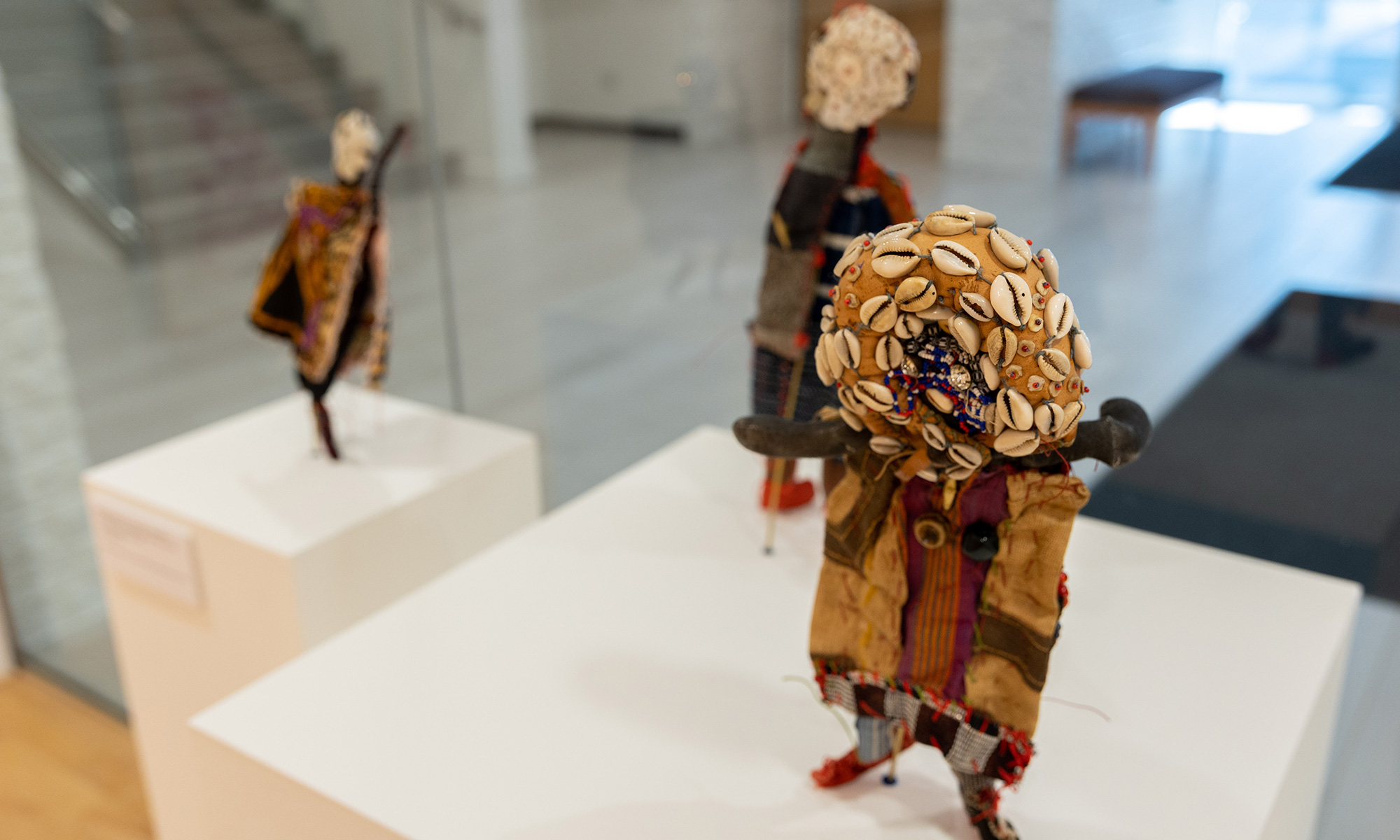Less than a year before his death in 2022, Black studies professor Terrance Dean wrote a “love letter” to an artist he had never met, but whose eclectic work provides an intimate portrait of life in a Columbus, Ohio, housing project.
Dean’s lavish praise for Aminah Robinson (1940-2015) appeared in his 2021 column in the Columbus Dispatch, where he served on the editorial board.
The genius of Aminah’s work is that we became time travelers into her world, community and life. We were transported into spaces and times and moments that signified a people, Black people’s homes and lives. We were, if only for a moment, in Poindexter Village.
Due in part to Dean’s connection and his scholarly research, an exhibit of Robinson’s evocative artistry is on display at the Denison Museum through May 14, 2023.
Composing Communities, the Work of Aminah Robinson features select pieces that highlight her love of music. The art is on loan from her estate and the Columbus Museum of Art, where Dean served as the first Aminah Brenda Lynn Robinson Scholar-in-Residence.
Dean, who died unexpectedly at age 53, was in the process of writing a biography and developing a Robinson-themed library and curriculum that could be taught in schools using her art as a backdrop.
“Terrance wanted to bring an exhibition of Aminah’s work to the Denison Museum,” said Megan Hancock, senior curator of education and exhibitions. “It sounded very exciting. How could it not tie into so many classes and projects?”
Hancock expects that more than 60 classes will tour the gallery by the end of spring semester. Students will examine the vibrant paintings, drawings, texts, dolls, and music boxes, many inspired by Robinson’s time in Poindexter Village, one of the nation’s first federally funded housing projects.
Much of Aminah Robinson’s art celebrates everyday life from her time living in Poindexter Village in Columbus, Ohio.
Some of Aminah Robinson’s art is made from items you can find around a house such as cloth, paper, and buttons.
“Aminah’s work celebrates everyday life in Poindexter,” said associate professor Lauren Araiza, who teaches history and Black studies. “We get a glimpse at how people were living. And while she’s a trained artist, a lot of her work has a folk art style to it. She uses everyday material like cloth, paper, and buttons. Her work is rooted in family and community.”
The Denison Museum is an ideal showcase for a spiritual artist who believed her work was eternal, and that the next generation of fertile minds would add new perspectives to it. She called the philosophy “Raggin’ On.”
That, in essence, is what Dean had begun as a scholar-in-residence after accepting the post from Deidre Hamlar, director of the Aminah Robinson Legacy Project at the Columbus Museum of Art. He was particularly interested in the religious components of her artistry that traced her ancestors’ journey from Africa to the American South to Columbus.
Hamlar, who toured the gallery in late January, is thrilled with the reception the exhibit is receiving. She was surprised to meet students who knew of Robinson’s legacy and was excited to learn of a second Denison connection to it.
In fall 2021, Cheryl Kennedy McFarren, an associate professor of theatre, and Micaela Vivero, a professor of studio arts and Latin American and Caribbean studies, took 40 students to the Columbus Museum of Art to see the Raggin’ On exhibit.
McFarren tasked her students with developing short theatrical performances based on their interpretations of Robinson’s art. The professor might do something similar. She hopes to someday create a show about Robinson’s life using the 150 journals she kept as resource material.
“Seeing the work is like being in the presence of a great spirit,” McFarren said. “Someone who tirelessly told stories from her own life, who had tragic things happen, but who surmounted that suffering with artistry and connected us through her work. She’s such an important figure and personality, such a larger-than-life woman.”










